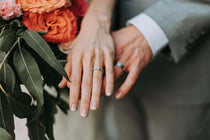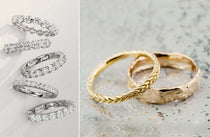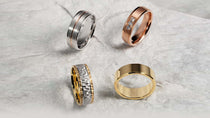When planning your wedding, you will encounter a myriad of traditions and decisions, one of which is the purchase of wedding bands. Traditionally, the responsibility for buying the groom's wedding band falls to the bride, while the groom purchases the bride's band. This reciprocal exchange symbolizes the commitment and the sharing of life's responsibilities moving forward. The practice varies, however, depending on cultural customs, personal preferences, and financial situations.
Selecting the right wedding bands is a significant part of wedding preparations. As you explore options for the groom's wedding band, you may consider factors such as design, material, and cost. While some couples prefer classic gold bands, others might opt for more modern materials like titanium or tungsten. It’s not just a piece of jewelry; it's a symbol of the bond you will share.
Bear in mind that the choice of who buys the wedding bands can also be a mutual decision between you and your partner. Some couples choose to buy their bands together as a joint expense, or even involve family members in the decision-making and purchasing process. Ultimately, the most important aspect is the meaning behind the bands, not who pays for them.
Cultural and Historical Context of Wedding Bands
Wedding bands carry deep significance across cultures, representing a commitment that transcends time. From their conception in ancient civilizations to the transformations throughout global conflicts, these rings embody traditions that have evolved to form the marital customs you know today.
Origins in Ancient Egypt
The tradition of wedding bands originated in Ancient Egypt, where rings were made from braided hemp or reeds and placed on the fourth finger of the left hand. This finger was believed to contain the "vena amoris," or vein of love, that led directly to the heart. The circular shape of the ring symbolized eternity, a concept deeply rooted in ancient Egyptian culture.
Evolution Through History
Over time, the materials used for wedding bands shifted from perishable reeds to longer-lasting metals. Romans adopted the tradition, crafting rings from iron to symbolize strength and permanence. As the centuries progressed, precious metals like gold and silver became the standard, often engraved and embellished to reflect the wearer's social status and personal tastes.
Impact of World War II on Wedding Traditions
World War II had a significant impact on wedding traditions, especially pertaining to the exchange of wedding bands. During wartime, as a token of enduring love, soldiers would give wedding rings to their spouses before leaving for battle. This practice underscored the ring as a symbol of union and resilience, deeply ingraining the tradition of the groom’s wedding band in Western culture. The ritual of both partners wearing a wedding band became normalized post-war, reflecting changed gender roles and the essence of mutual commitment.
Modern Wedding Band Traditions
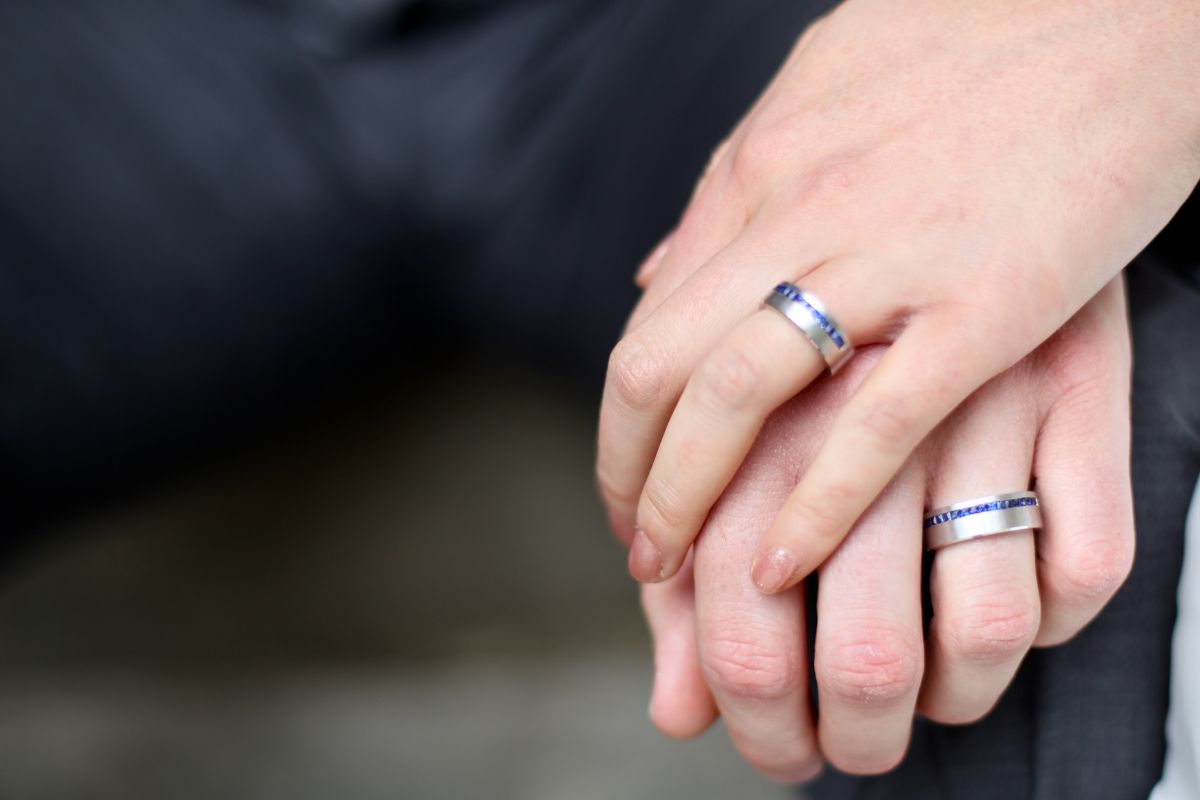
When exploring modern wedding band traditions, it's important to understand the evolving practices pertaining to purchasing the groom's wedding band, the trend towards shared expenses, and the diverse customs that vary by region.
Who Traditionally Buys the Groom's Band
Traditionally, you might expect the bride or her family to purchase the groom's wedding band as a symbol of joining their family. This practice aligns with historical norms where the bride's side would often bear the costs of various elements of the wedding. It reflects a time-honored tradition that emphasizes the bride's family's role in the marital union.
| Tradition | Description |
|---|---|
| Exchange of Rings | During the wedding ceremony, the couple exchanges rings as a symbol of their commitment and love. |
| Matching Bands | Couples often choose matching or complementary wedding bands to symbolize unity and connection. |
| Personalized Engravings | Many couples engrave special messages, dates, or initials inside their wedding bands for a personal touch. |
| Unique Materials | Modern couples explore alternative materials like titanium, tungsten, or mixed metals for their wedding bands. |
| Stacking Bands | Some couples choose to wear multiple bands, creating a stacked look over time for significant milestones. |
| Custom Designs | Couples often opt for custom-designed wedding bands to reflect their unique style and preferences. |
| Anniversary Bands | It's common to celebrate anniversaries by exchanging additional bands or upgrading the original ones. |
| Symbolic Gemstones | Adding gemstones with symbolic meanings, such as birthstones or meaningful colors, is a modern trend. |
| Non-Traditional Shapes | Modern wedding bands may feature non-traditional shapes, such as hexagonal or wave designs. |
| Ring Warming Ceremony | Some couples include a ring warming ceremony where the rings are passed among guests for blessings and well wishes. |
Shared Expense in Contemporary Practices
However, in contemporary wedding practices, the cost of the groom's band is frequently a shared expense. It has become more common for you and your partner to split wedding costs more evenly. Couples often view their wedding as a partnership and choose to share financial responsibilities, which can include the purchase of wedding bands.
Regional Variations and Customs
You will find that regional variations and customs play a significant role in who buys the groom's wedding band. In some cultures, the groom's wedding band might be part of a dowry or may come from specific family heirlooms, whereas, in others, the couple may follow the more traditional route and adhere to local practices. These variations are deeply rooted in the traditions and history of your own or your partner's cultural background.
Financial Considerations
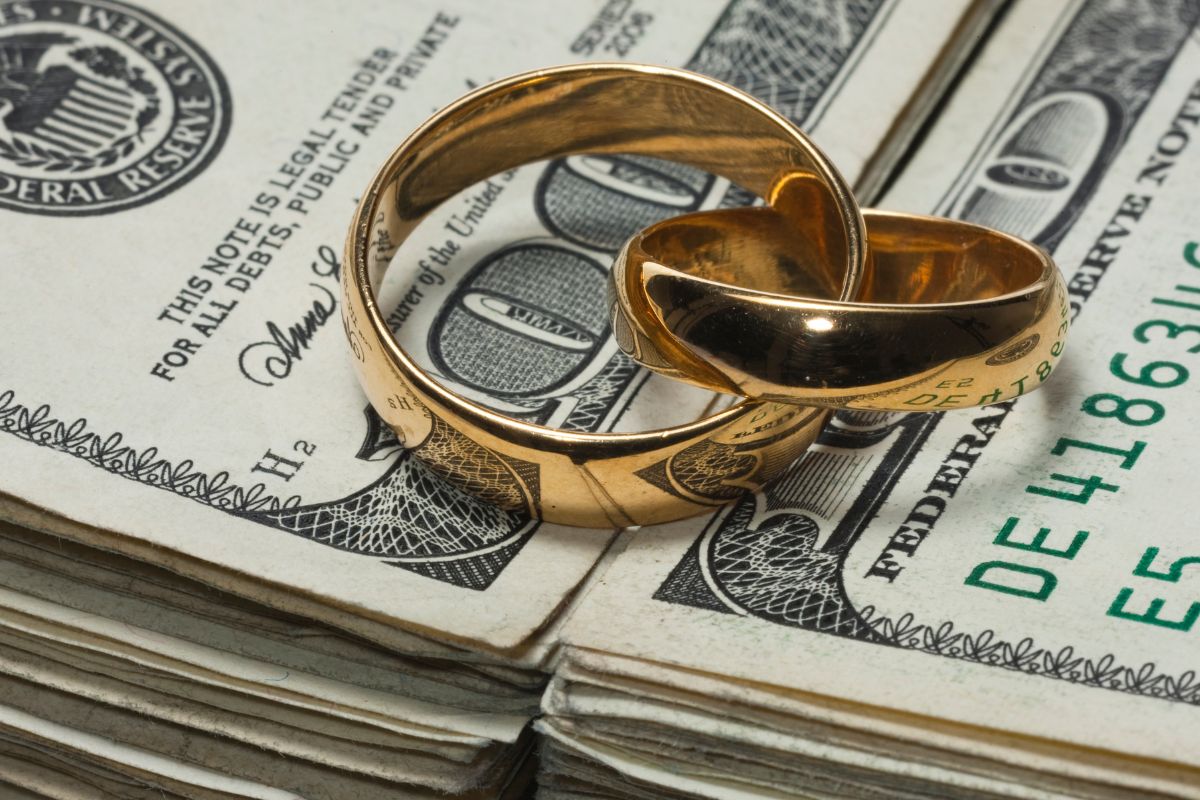
When considering the purchase of the groom's wedding band, it's important to think about who will pay for it, how it fits into the overall wedding expenses, and the possibilities of how the cost can be split between parties involved.
Determining Who Pays
Traditionally, the bride or her family may choose to buy the groom's wedding band as part of the wedding expenditures. However, modern practices see no hard and fast rule for this; it can vary depending on personal preferences or financial situations. It is essential to have an open and honest conversation about this aspect well in advance of the wedding.
Wedding Expenses and Budgeting
The cost of the groom’s wedding band must be considered within the larger context of wedding expenses. You should establish a clear and detailed budget early on, accounting for all foreseeable costs, from venue rental to catering to rings. This ensures that no single expense, like the groom’s wedding band, overwhelms your finances.
Splitting the Cost
Splitting the cost of the groom’s band is an option that can alleviate financial pressure. Here are two common approaches:
- Equally Among Parties: The bride and groom, or each of their families, contribute an equal share towards the ring.
- Percentage-Based: The cost is divided based on income or agreement, where one party pays a larger percentage than the other.
Remember, clear communication about financial contributions is crucial to prevent misunderstandings.
Choosing the Right Wedding Band
When selecting a men's wedding band, it's key to focus on the material and metal type, ensure a proper fit, and consider the groom's personal style and lifestyle. These elements will guide you in finding a ring that is both comfortable and reflective of character.
Materials and Metals
The choice of metal for your wedding band is crucial since it affects both the ring's appearance and durability. The most common metals include:
- Gold: Traditional and timeless, with options like yellow, white, and rose hues.
- Platinum: Known for its strength and a heavier feel, platinum is a hypoallergenic choice.
- Titanium: Lightweight and incredibly durable, ideal for an active lifestyle.
- Tungsten: Scratch-resistant with a heavier weight, tungsten is a modern choice.
Consider the daily activities when choosing a metal, as some, like gold, can scratch more easily, whereas others, like tungsten, are more hardwearing.
Determining the Correct Fit
A properly fitting wedding band should feel comfortable and secure on your finger. To determine your size:
- Visit a jeweler for a professional sizing.
- Ensure the sizing is done when your hands are at a normal temperature.
- Finger size can change throughout the day, so consider multiple measurements.
Tip: Bands with a comfort fit—curved on the inside—tend to be more comfortable for continuous wear.
Personal Style and Lifestyle
Your wedding band should be an extension of your personal style. Consider whether you prefer a:
- Classic look: Plain bands with no embellishments.
- Modern style: Bands with textured finishes or mixed metals.
Additionally, factor in your lifestyle:
- If you work with your hands, look for metals that can withstand daily wear.
- For regular exercise or outdoor activities, consider a comfort-fit band that won’t interfere with your routine.
Reflect on these details to choose a wedding band that you're not only proud to wear but one that suits your day-to-day life.
Customization and Engravings

When opting for wedding bands, you have the opportunity to make them unique through customization and engravings. These elements not only personalize the rings but also resonate with your individual personalities and the customs significant to your relationship.
Adding Personal Touches
The trend of customizing wedding bands is about more than aesthetics; it reflects your story and bond. From the choice of metal to the width and finish of the band, each decision caters to your preferences. Custom shapes might incur a higher cost but stand out as a representation of your uniqueness.
Choosing an Engraving
Engravings are a timeless way to inscribe your sentiments on wedding bands. Whether it's a date, a phrase, or initials, the carving should be significant to you both. Opt for an engraving that echoes your commitment, and keep in mind the space available on the ring—the intricacy of the design might be limited by the band's width.
Matching Wedding Bands
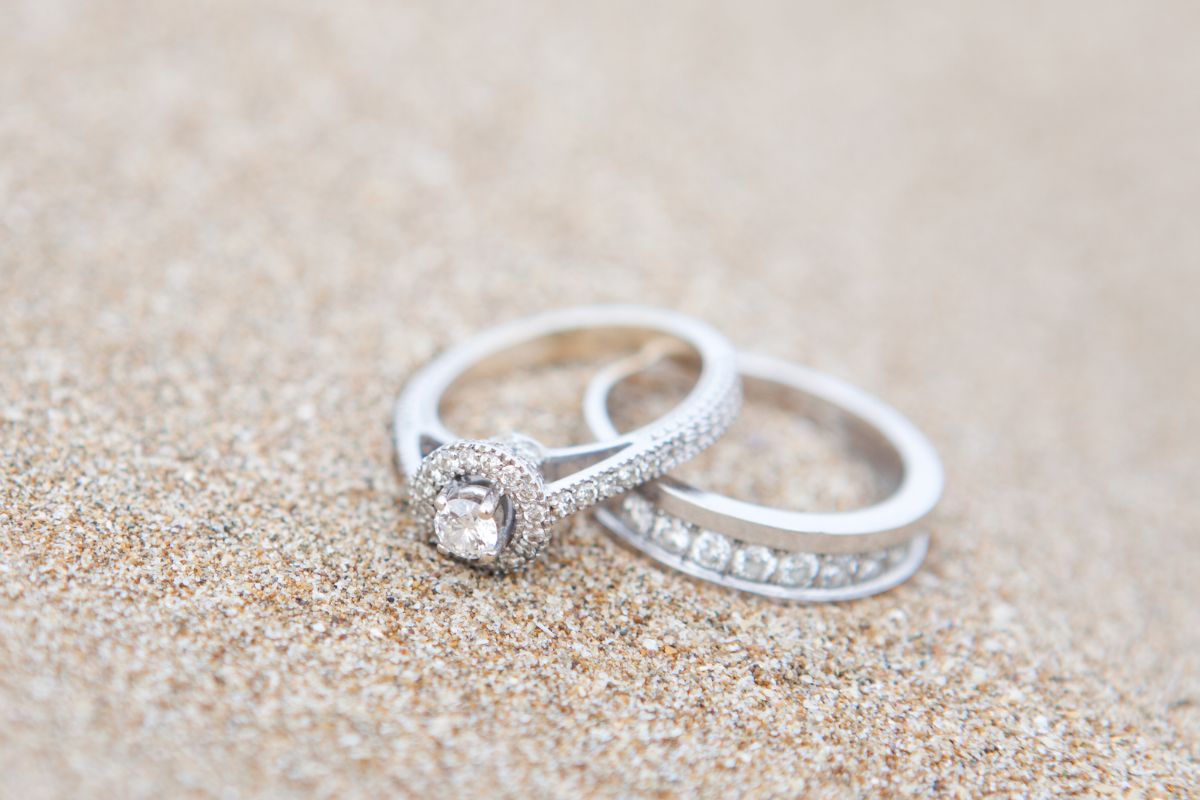
When you and your partner select matching wedding bands, you're embracing a symbol of unity that has been celebrated across cultures for generations. These rings signify your shared journey and the commitment you’ve made to one another.
Symbolism of Unity
Matching wedding bands underscore the connection between you and your partner. They embody the idea that both bride and groom are equal parts of a cohesive unit. Often, matching bands will incorporate designs, engravings, or metals that are reflective of your joint tastes and the harmony in your relationship.
Couples' Preferences
When it comes time to purchase wedding rings, couples often consider their individual styles while seeking a cohesive look. Your preference might lead you to choose bands that are identical or ones that simply share elements, such as a specific engraving or type of metal. It is not uncommon for the bride to take a central role in the selection, but ultimately, both you and your groom contribute to the final decision, ensuring that the rings resonate with both your personalities.
Deciding who buys the groom's wedding band can vary based on personal preference and tradition. Some couples choose to buy each other's rings as a gift, while others decide to select and purchase their bands together. The important aspect is that the choice fits what feels right for both of you.
Frequently Asked Questions
Navigating the customs and decisions regarding wedding bands can be quite specific. These FAQs serve to provide you with clarity on commonly asked questions about purchasing the groom’s wedding band.
Is it common for the bride to purchase the groom's wedding band?
It's not uncommon for the bride to purchase the groom's wedding band as a gesture of love and commitment. This practice can vary depending on personal preferences and cultural norms.
How do couples typically decide on purchasing wedding bands?
Couples often discuss their budgets and style preferences together before making a decision on wedding bands. The choice is made jointly to ensure both partners are happy with the selection.
When should the groom's wedding band be bought?
Ideally, the groom's wedding band should be purchased well before the wedding date to ensure any needed adjustments can be made. A common timeframe is three to four months in advance.
Do men have a say in selecting their own wedding bands?
Yes, men typically have a say in selecting their own wedding bands, as it's important that they feel comfortable with the style and fit of the ring they will wear.
What determines who pays for the men's wedding band?
Who pays for the men's wedding band can depend on a variety of factors, including individual financial situations, cultural traditions, or a couple’s shared agreement.
Are there traditions that dictate the purchasing of the groom's wedding band?
Some cultural traditions may influence the purchasing of the groom's wedding band, but these are not universal. The tradition varies widely, with some opting for modern practices that suit their circumstances.
Checkout some of our top collections:





